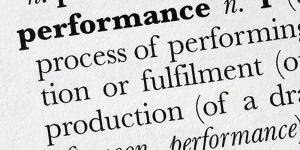Is the manager’s dilemma threatening your well-being?
The workplace for managers in a VUCA world
Who doesn’t work in a context that is volatile, uncertain, complex and ambiguous (VUCA)? If you’re reading this (rather than being blissfully ‘off-grid’, in some remote location, disconnected from the hurly burly of modern life), then you’ll likely be impacted by VUCA.
One of the consequences of VUCA is that the work of managers has become a lot more challenging, and also faster-paced. For this reason, managers often find themselves in a situation where there is more to do than the available time and resources will allow. Managers constantly need to make difficult choices about what to do and what to leave undone. Of course, those very choices will, over time, determine whether they succeed or burnout.
Business author, Jesse Sostrin, calls this the Manager’s Dilemma. He provides a great example of being faced with a choice between drinking from a fire hose or having your well run dry. ‘Neither’ might be the preferred way to go, but that’s not an option. Interested? Let’s dig a little deeper.
‘Yes’ or ‘No’? How do you respond to the following questions?
Take a look at the questions that follow and note a ‘yes’ or ‘no’ response to each. Although there is value in a ‘gut’ response, in this case you might want to reflect even a few seconds on your response. You might quickly answer ‘yes’ or ‘no’, but challenge yourself to find a few pieces of evidence to support your choice. Also, scan your context and satisfy yourself that there is not sufficient evidence supporting a contrary answer.
Think about your ability to influence decisions that have a direct impact on your own context. Do you feel sufficiently in control for much of the time? For example, controlling how you work, having the resources you need to do the job, and the ability to manage your time.
What about expectations? Are you clear what is expected of you in your role and also the extent of your authority? Feeling uncertain or on edge might be a sign that there is insufficient clarity.
Next is the extent to which the values of the business (‘the way we do things around here’) match your personal values. Do your values mostly align with those you experience in the business? When they’re not aligned, you’re likely to feel a degree of discomfort, which can be emotionally draining.
How about the pace of work? Are you able to work at a steady pace with sufficient resources available? If you find the pace rather chaotic and unrelenting, rather than just an occasional burst of busyness every now and again, then you’d likely answer ‘no’ to this question.
Overall, are workplace dynamics good, resulting in a positive work experience for you? Signs they’re not might include feeling micro-managed, suffering from toxic co-worker relationships or continually dealing with nasty clients. Challenges of this nature can be emotionally draining and result in increased stress.
Finally, think about work-life balance. Broadly, it’s about finding time outside of your work to recharge and refresh. Are you able to get away from your work in such a way that you can revitalise? If you’re completely drained, perhaps even taking work home with you or waking up thinking about it in the middle of the night, then you’d definitely answer ‘no’.
The theory of margin
Life experience and common sense will already have suggested that answers in the negative, to the few questions prior, impact your effectiveness in the role and on your well-being more generally. A helpful explanation of this kind of situation comes from educational psychologist Howard McClusky. In a university setting, McClusky noted that some students seemed to successfully complete their studies whereas others were not successful. Looking more closely at their contexts, he found a simple explanation.
Essentially, many whose studies suffered were overwhelmed by other factors in their lives. For example, students working a few part-time jobs to make ends meet, or parents with significant child care responsibilities, experienced a heavier ‘Load’ (responsibilities of life). For a manager, Load might come from span of control, available resources, scope of work etc.
On the other side of the scales is the Power that people had available to tackle the challenges presented. For example, the ability to reduce part-time working hours or to limit the impact of child care duties by getting more help would be relevant to student studies. For managers, it might be level of expertise, resources available, time frame for project etc.
The important consideration is Margin. For McClusky, that was the ratio between Load and Power. It is however easier to think about it as a sum. In this adaptation, Margin=Power-Load. If Load (the demand) is higher than the Power (capacity available to address the Load), then Margin is negative. The larger that negative number, the deeper the hole and the greater the chances of breakdown, even failure.
Doing the sums
It can be extremely helpful to calculate the Margin in your own context, especially if you’re finding things tough going. Just naming the various contributing factors can assist you in framing things differently because you become more consciously aware of your context. If you manage others, then having the Margin discussion with them can be very supportive.
PRACTICAL IDEAS TO APPLY IN YOUR BUSINESS
Tips for addressing the Manager’s Dilemma
Only very few would be so fortunate to be free of the Manager’s Dilemma (MD), since it’s part of the VUCA context. However, you can reduce its effects, so here are three tips for doing that.
- Try and understand your problem context by mapping it out in detail. The MD is like any problem – you will only be able to deal with it effectively if you acknowledge it’s there and have a sense of what it involves. Sostrin suggests asking ‘what’ and ‘why’, looking for the underlying dynamics of the problem and expecting to see the unexpected.
- Clarify, in the context, what it is you’re trying to achieve (your goals) and why (your purpose). This will help you more easily identify when you’re making choices that lead you away from, rather than closer to, the outcomes you want.
- Distinguish your contribution for greater impact. This means being clear on what unique value you are bringing to the context. How can you make your contribution sufficiently unique and valuable, such that people recognise and value your special offering?



